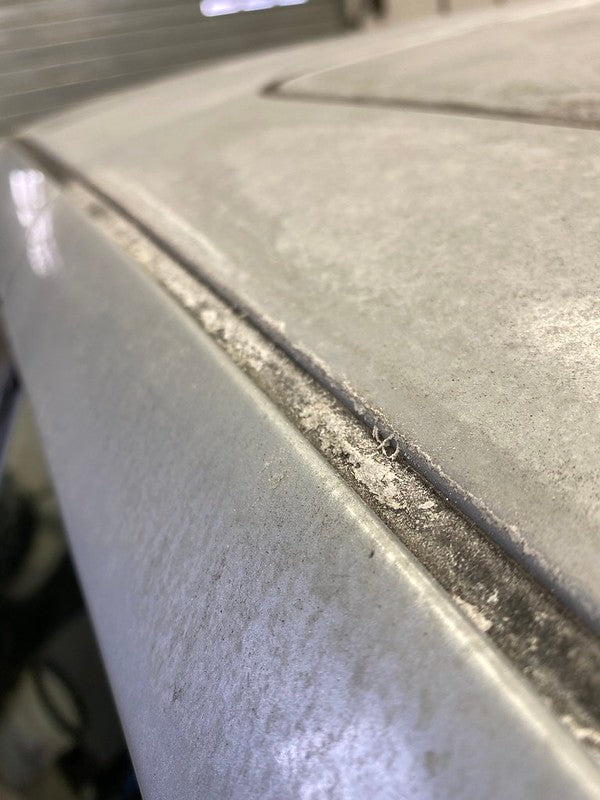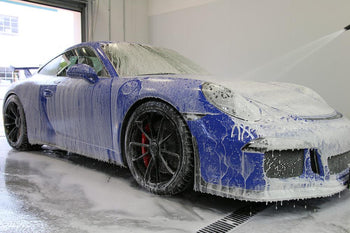
1997 BMW M3: Calcium Deposit and Hard Water Spot Removal - Save the Paint!
1997 BMW M3: Calcium Deposit and Hard Water Spot Removal - Save the Paint!
We were recently contacted by a new customer requesting us to help him with saving the paint on his newly acquired 1997 BMW M3 4 in Arctic Silver/Black with 44k miles on it. At first glance we clearly thought the car was damaged beyond repair due for a paint job. The paint was damaged with calcium deposit and hard water spots for a good amount of time, probably years of damage. The key with calcium deposit and hard water spots would be to remove them asap!
Where does calcium deposits come from?
Most of the time this comes from parking in a parking garage that is built of concrete (that's about all of them) and something is leaking water with mineral content (hard water). It looks like the below photo, white, salty, and feels rough.

In this case we figured the problem areas were contaminated for years! We took the challenge on to try to save the paint.
Test spots show some promise on the paint as well as the glass. (see water spot and calcium deposit removal on glass)


Step 1: Wash the car thoroughly. This will remove road grime and dust on your car. It will also help eliminate some of the minerals responsible for the hard water spots. Now dry the car completely.

Step 2: Mix 1 part regular white vinegar with 1 part distilled water (soft water is good too). It's better not to use regular tap water which contains minerals. Apply the vinegar/water solution with a spray bottle on to the affected paint finish. Allow mixture to work for up to 10 minutes. The acid in the vinegar will help loosen the hard water minerals embedded in the paint. After allowing to work for 10-30 minutes, wash and dry the car again to remove the water/vinegar solution. Repeat if necessary.

Step 3: After the vinegar dilution we used Nanolex Wheel Cleaner and Iron Remover - Decon process figuring this car probably had some other contaminants on the paint.

After the decon and final wash - we were able to remove all the calcium deposits, however we uncovered dull paint with some etching from the water and calcium.

Step 4: Compound to reduce any more paint flaws as well as reduce remove water etchings.


Step 5: Polish to bring back the gloss to it's former glory. (take a look at the difference top after the vinegar/decon/wash - bottom showing compound and polish)

Step 6: Protect the repaired finish


Here are the products used:
- Nextzett W99 - Pre soak and wash (something more aggressive than your normal wash)
- Distilled Vinegar 1:1
- Nanolex Wheel Cleaner and Iron Remover
- Stoner's Tarminator
- Nanolex Glass Polish
- Meguiar's M101
- Meguiar's M205
- Rupes Yellow Wool Pad
- Rupes Yellow Foam Pad
- Rupes LHR15 MKIII
- Rupes LHR75
- The Rag Company Miner MF Towels
- Nanolex Si Finish
Key take aways.
Remove calcium deposits and water spot as soon as you can. Keep a microfiber and quick detailer in your car for cases like this, it will remove most these type of stains if you're not able to clean the complete car immediately.
Always try to keep your car protected with a wax/sealant/coating it will make it much easier to remove these type of issues arise.
There have been cases where the damage has been too great and would require a repaint, in this case we were able to save the paint and bring back some nice gloss. We did have some etching left over on the paint however the silver being such a forgiving color it's hard to notice. If this were a darker color you may want to consider other options like a repaint.
